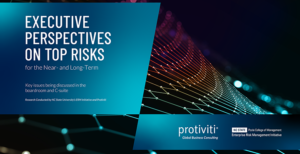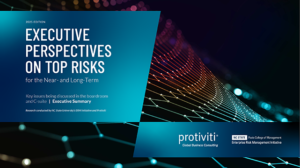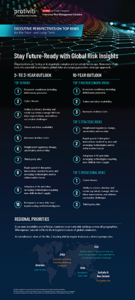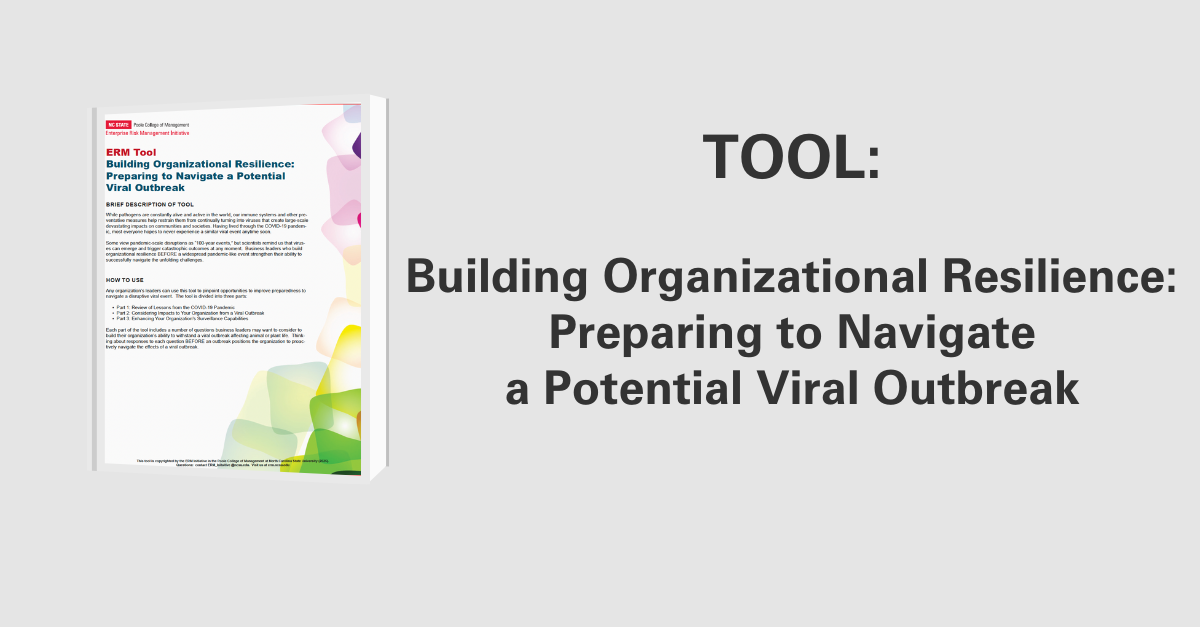REPORT: Executive Perspectives on Top Near-Term and Long-Term Risks
Key Risk Trends Impacting Boardrooms and the C-Suite in 2025 and Beyond

Insights from the 13th Annual Executive Risk Survey
The Enterprise Risk Management (ERM) Initiative at NC State University, in partnership with Protiviti, has released its 13th annual edition of the Executive Perspectives on Top Risks report. This in-depth survey captures insights from 1,215 board members and C-suite executives worldwide, offering a comprehensive risk assessment for both near-term (2–3 years) and long-term (2035) risk landscapes.
With organizations navigating economic uncertainty, regulatory volatility, technological disruption and workforce challenges, this report serves as a critical enterprise risk management tool, providing key takeaways for risk oversight and strategic decision-making.
Top 10 Near-Term Risks (2025–2027)
Based on responses from global executives, the top 10 business risks for the next 2–3 years include a mix of macroeconomic, strategic, and operational concerns:
- Economic conditions, including inflationary pressures
- Cyber threats and data breaches
- Ability to attract, develop and retain top talent, manage shifts in labor expectations, and address succession challenges
- Talent and labor availability
- Increasing labor costs impacting profitability
- Heightened regulatory changes, uncertainty and scrutiny
- Third-party risks, including supply chain vulnerabilities
- The rapid speed of disruptive innovations in AI and emerging technologies
- Challenges in adopting AI and advanced tech requiring new labor skills in short supply
- New and emerging risks arising from AI implementation
The Economy, Cybersecurity, and Talent Challenges Dominate Risk Concerns
The survey highlights three primary risk themes:
- Macroeconomic volatility—Economic conditions, inflationary pressure and labor costs remain dominant concerns.
- Cyber threats and digital risk—With the rise of AI-powered cyber threats, organizations face increased exposure to data breaches, ransomware attacks and evolving cyber risks.
- Talent and workforce transformation—Businesses struggle with talent shortages, upskilling for AI-driven roles and leadership succession planning in an evolving job market.
Differences in Risk Rankings by Executive Position
While the top business risks affect all organizations, risk perception varies across leadership roles. The table below outlines the top 3 near-term risks ranked by key executive positions.
| Role | Top Risk | Second Risk | Third Risk |
|---|---|---|---|
| Board Members | Economic conditions | Talent and labor availability | Cyber threats |
| CEOs | AI adoption workforce skills | Cyber threats | Rapid speed of disruptive innovation |
| CFOs | Economic conditions | Cyber threats | Increasing labor costs |
| CIOs/CTOs | Increasing labor costs | Economic conditions | Talent acquisition, workforce retention and succession planning |
| CHROs | Increasing labor costs | Talent and labor availability | Talent acquisition, workforce retention and succession planning |
Sub-Analyses Across Different Industries and Organizational Characteristics
The report provides sector-specific risk insights, examining risk perception differences based on:
- Company size (small, mid-sized, enterprise-level businesses)
- Industry focus (financial services, healthcare, manufacturing, tech, etc.)
- Geographic region (North America, Europe, Asia-Pacific, etc.)
- Ownership structure (public, private, nonprofit, government)
Top Long-Term Risk Concerns (2035 Outlook)
Beyond the immediate horizon, executives foresee significant challenges over the next decade, particularly in the macroeconomic, strategic, and operational landscapes.
Long-term Macroeconomic Risks (Top 2)
| Full sample | Percentage |
| Economic conditions, including inflationary pressures | 39% |
| Talent and labor availability | 34% |
Long-term Strategic Risks (Top 2)
| Full Sample | Percentage |
| Heightened regulatory changes, uncertainty and scrutiny | 30% |
| Rapid speed of disruptive innovations enabled by new and emerging technologies and/or other market forces | 30% |
Long-term Operational Risks (Top 2)
| Full Sample | Percentage |
| Cyber threats | 31% |
| Ability to attract, develop and retain top talent, manage shifts in labor expectations, and address succession challenges | 26% |
Risk Management Strategies for Business Leaders
With risk oversight and enterprise risk management (ERM) frameworks becoming more vital, organizations must:
- Strengthen risk governance structures to address evolving threats.
- Invest in cybersecurity resilience to counter emerging AI-driven cyber risks.
- Develop future-ready workforce strategies to navigate talent shortages and workforce shifts.
- Enhance scenario planning and regulatory compliance to stay ahead of policy changes.
Download the Full Report
The 2025 Executive Perspectives on Top Risks report by NC State University’s ERM Initiative and Protiviti is now available for complimentary download. Gain in-depth insights into risk trends, industry breakdowns, and executive perspectives.



Live Webinar
Partnership Between

- Types:


